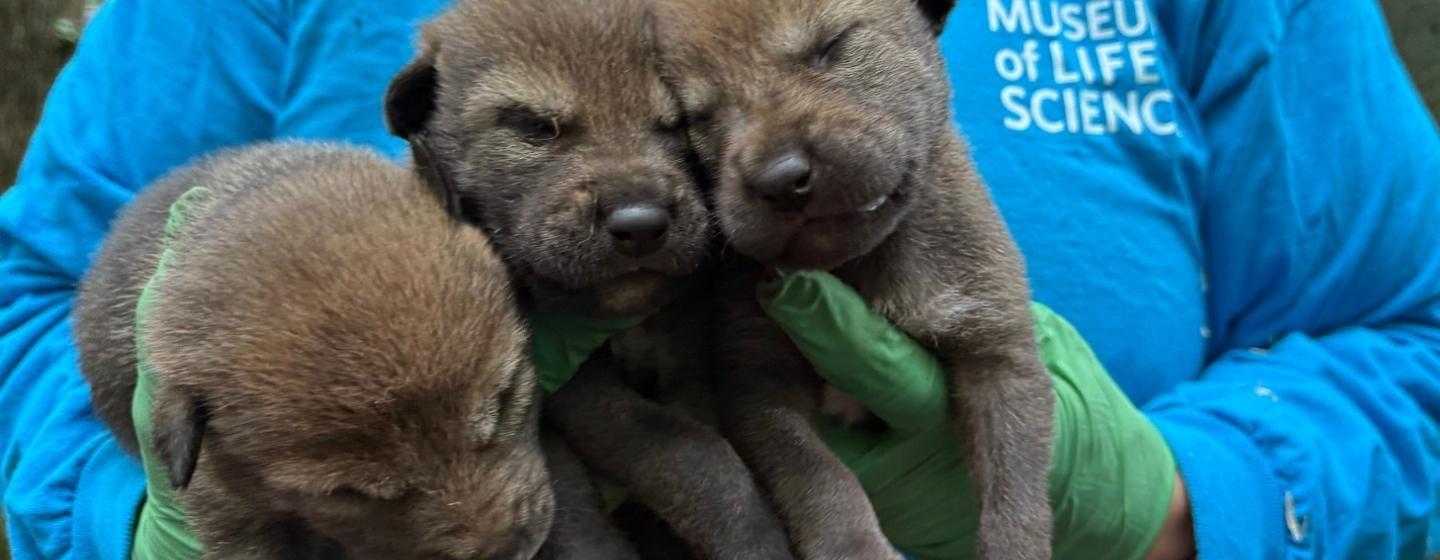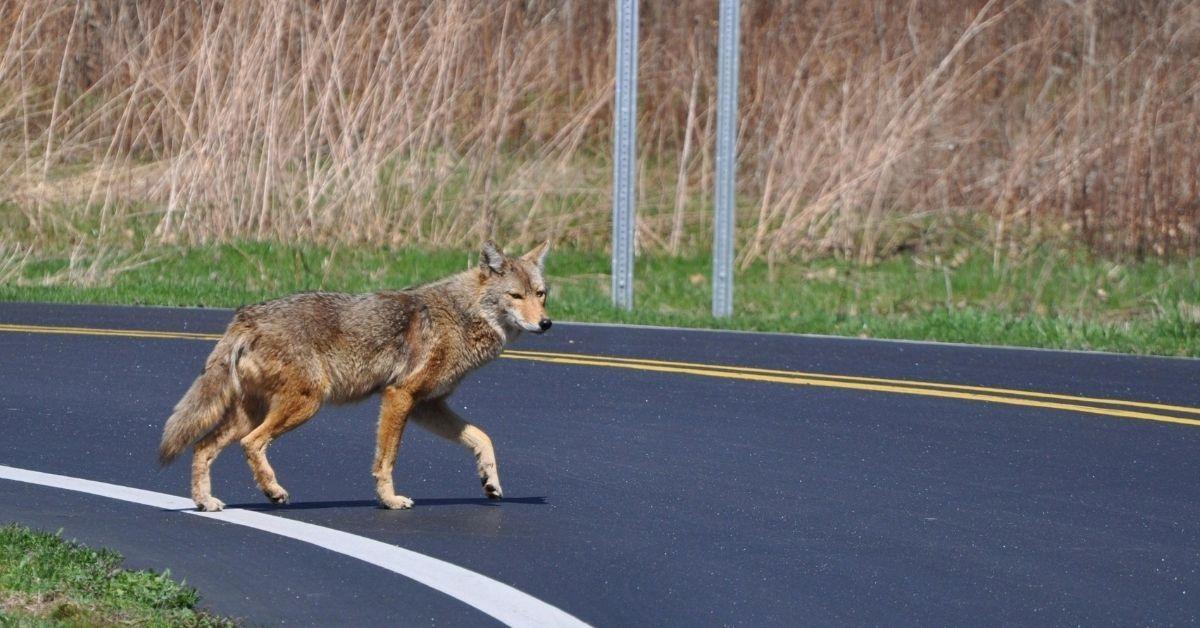A Red Wolf Conservation Win in Durham


In May, Durham’s Museum of Life and Science marked a major conservation milestone when seven-year-old female red wolf Martha welcomed a litter of three male pups. A thorough examination by the museum’s Animal Care Team and veterinary staff determined that Martha and her pups are doing well.
Martha and breeding partner Oka were identified as a valuable match to maintain genetic diversity in the red wolf population in the summer of 2023. Martha (born 2018) and Oka (born 2014) arrived at the museum in October 2024.
Red wolves were once common throughout the southeastern United States, but they were driven to near extinction in the late 1960s. In 1973, the U.S. Fish and Wildlife Service began the American Red Wolf Recovery Program, an aggressive conservation effort that led to new ways to track and protect the species.
It’s estimated there are only 15–20 red wolves in the wild, and they’re all found in eastern North Carolina. There are fewer than 300 red wolves under human care and the wild combined. They are the world’s most endangered canid, which includes any animal of the dog family.
There are 50 partner facilities, 22 of which are accredited by the Association of Zoos and Aquariums (AZA), that are dedicated to protecting and increasing the American red wolf population and are part of AZA’s red wolf Saving Animals from Extinction (SAFE) initiative. The red wolves housed at the Museum of Life and Science play a vital role in the American Red Wolf Recovery Program.
“Institutions within the Red Wolf SAFE program, like ours, hold a significant responsibility, especially as we face challenges with the wild population,” said Sherry Samuels, senior director of animal care at the museum, in a press release. “This is an exciting time for the species and the Museum.”
The new litter is a significant milestone in species conservation efforts for the red wolf. It’s also the second consecutive successful red wolf breeding season at the museum. Since receiving its first red wolf in November 1992, the museum has welcomed new litters in 1993, 2002, 2017, 2018, 2019, 2024 and this year.
“This summer promises to be filled with excitement as we watch this family grow,” said Samuels. “Patience and quiet observation will be key when observing our new pups.”
There are many challenges to come, but museum animal care staff will closely monitor the pups. The public should be able to catch glimpses of the new pups this summer, although red wolves tend to be reserved around crowds and loud noise. You can follow the pups on the museum’s Facebook and Instagram pages.
Recommendations for this red wolf family’s future will be made after consulting with other scientists and institutions in the SAFE program.

Proposed animal crossings on U.S. 64 in the Outer Banks will help make roadways safer for the critically endangered species, other wildlife and even humans.